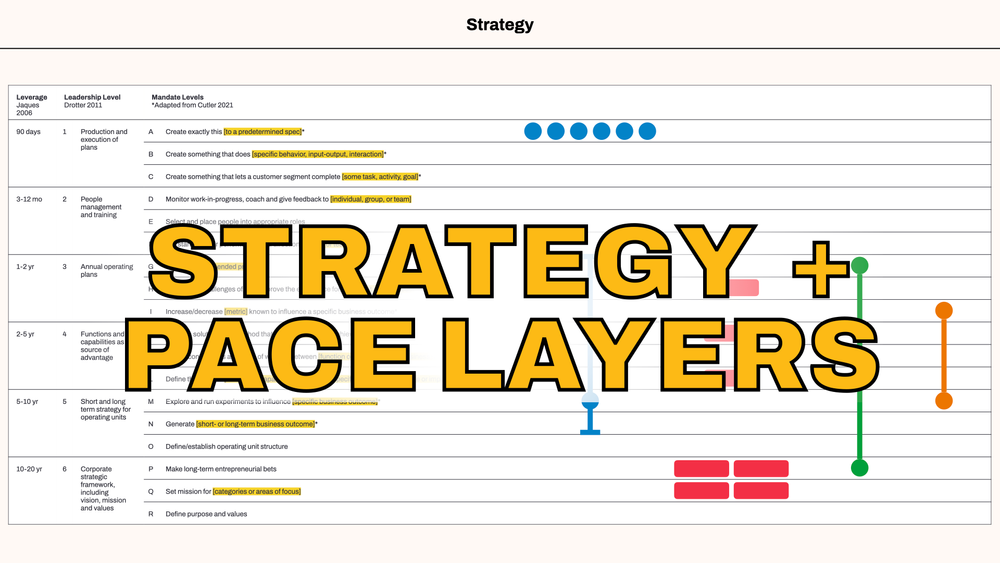- Home
- Redefining the Competitive Set

Redefining the Competitive Set
Updated on
Read Next
The Changemaker's Skills Maturity Matrix
This development tool is designed to give change-agents inside organizations clarity into their path forward, help them define and deepen strengths, and maybe give us some shared language about what we do.
Five Org Design Things N° 10
Pattern languages and org analysis; RTO is bad, even if offices are good; old maps made 3D; diverging values worldwide; exit interviews
Five Creativity Things
Challenges facing creativity; owning ideas from beginning to end; opinionated palettes; are we doing zines again?; randomness that didn’t fit in the first four categories
How to Combine Pace Layers, Org Design, and Strategy
4 ways to use Pace Layers in strategy and OD work: 🚀 As a career planning tool; 🎓 As a strategy tool; 🔬 As a diagnostic or sense-making tool; 🎨 As a design tool for value-adding layers.







